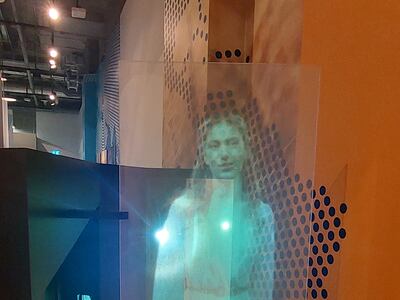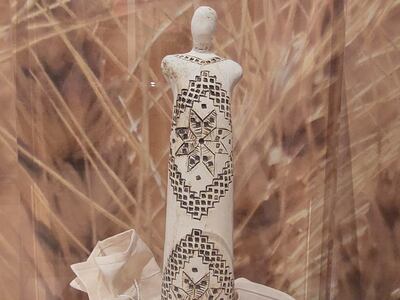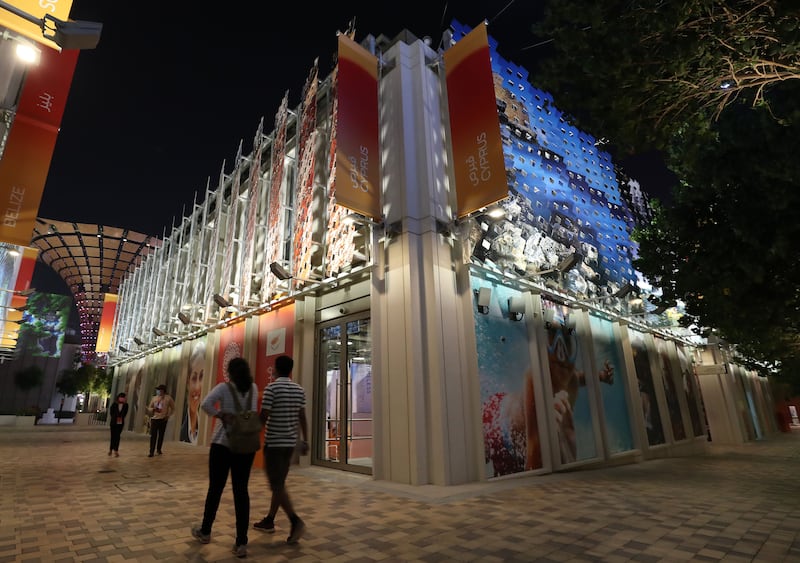For a third culture kid, Expo 2020 Dubai presents plenty of opportunity for self-reflection. If your father is English and your mother is Kenyan-Indian and you were born and raised in Cyprus, but have lived in the UAE for more than a decade, which country pavilion is “yours”?
Perhaps the beauty of this multicultural existence is that I am as drawn to the vibrant colours of the Kenyan pavilion as I am to the bookish exterior of the UK one, which is charmingly emblazoned with words, the founding blocks of my career as a journalist.
In the UAE Pavilion, I can reflect on the place where I have spent the bulk of my adult life but, ultimately, it is Cyprus, the tiny Mediterranean island that is the source of all my childhood memories, that feels most like home.
Follow the latest updates on the Expo here

Befitting its population of only 1.2 million, Cyprus Pavilion is small and understated, nestled in the alleyways of Expo’s Opportunity District. Visitors are greeted by a hologram of the ancient Greek goddess Aphrodite, who is said to have emerged from the sea off the west coast of the island. In her welcome speech, the goddess of love talks about Cyprus as a land of opportunity, and this is the underlying theme of the country’s Expo presence.
The space does a good job of highlighting some of Cyprus’s best assets. A series of other holographic displays focus on the country’s cuisine, from halloumi cheese, now formally recognised as being native to Cyprus by the EU's coveted Protected Designations of Origin register, to glyka tou koutaliou, bite-size sugary-sweet preserves made from fruits and vegetables such as figs, cherries, watermelon peel and walnuts.
A spotlight is also placed on the country’s past, with posters displaying some of its best-known archeological sites, including Kolossi Castle, the ancient amphitheatres at Kourion and the House of Dionysus in Paphos, to emphasise its history as a stopping point for the Romans, Assyrians, Phoenicians and Ottomans, among others.
There are examples of ancient mosaics, sculptures and traditional vessels crafted from dried pumpkins, as well as lefkaritiko, a form of embroidery from the village of Lefkara that is one of the country’s most treasured crafts, and phythkiotika, the wooden moulds used to make perfectly rounded loaves of traditional Cypriot bread.

There is also a focus on the future, a reminder that for smaller countries at least, Expo is still viewed as an opportunity to boost trade and attract foreign investment. There are interactive displays highlighting the island’s standing as an educational centre and business hub, in line with the pavilion's tagline, Cyprus: At The Centre Of Where You Want To Be, which is a nod to the island's strategic geographical location at the crossroads of Europe, the Middle East and Asia.
There are also pictures of some of its more recent infrastructure projects, including a skyscraper in my home town of Limassol that is viewed by many as an incongruous addition to the city’s otherwise low-lying skyline.
As I get my Expo passport stamped and exchange a few words of Greek with the woman manning the pavilion, she hands me a bar of rose-scented soap crafted on the island, a nice little souvenir from home. The pavilion does a decent enough job of capturing the spirit of Cyprus, and pays tribute to both its past and its future, but it feels like it barely scratches the surface of an island that is unexpectedly multifaceted, given its size.
Then again, I wonder if any pavilion, even the behemoths belonging to some of the world’s bigger nations, can really do justice to the nostalgia of a third culture kid hankering for home.











